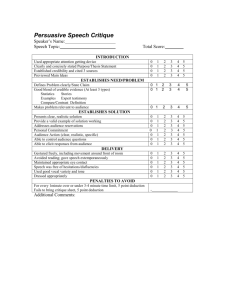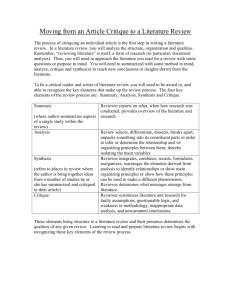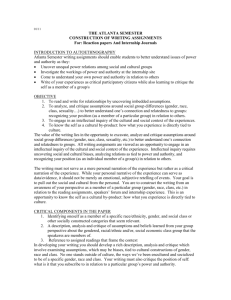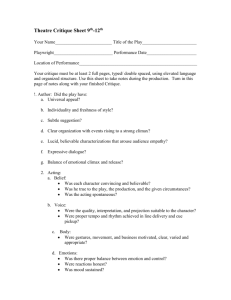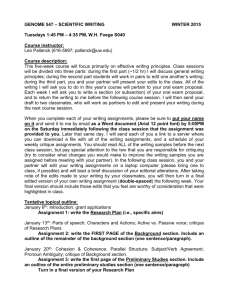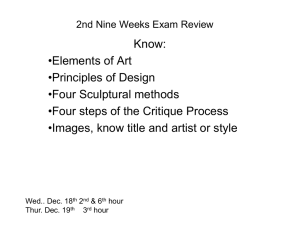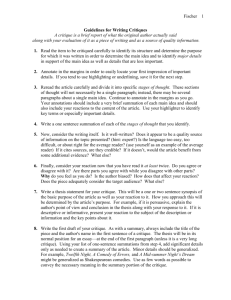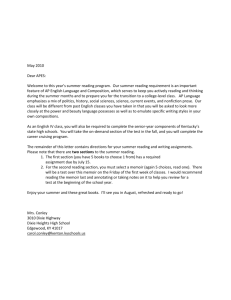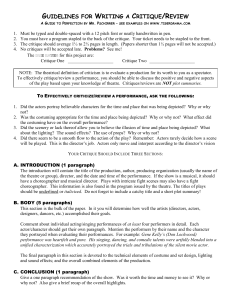A Guide to writing an Art Critique
advertisement
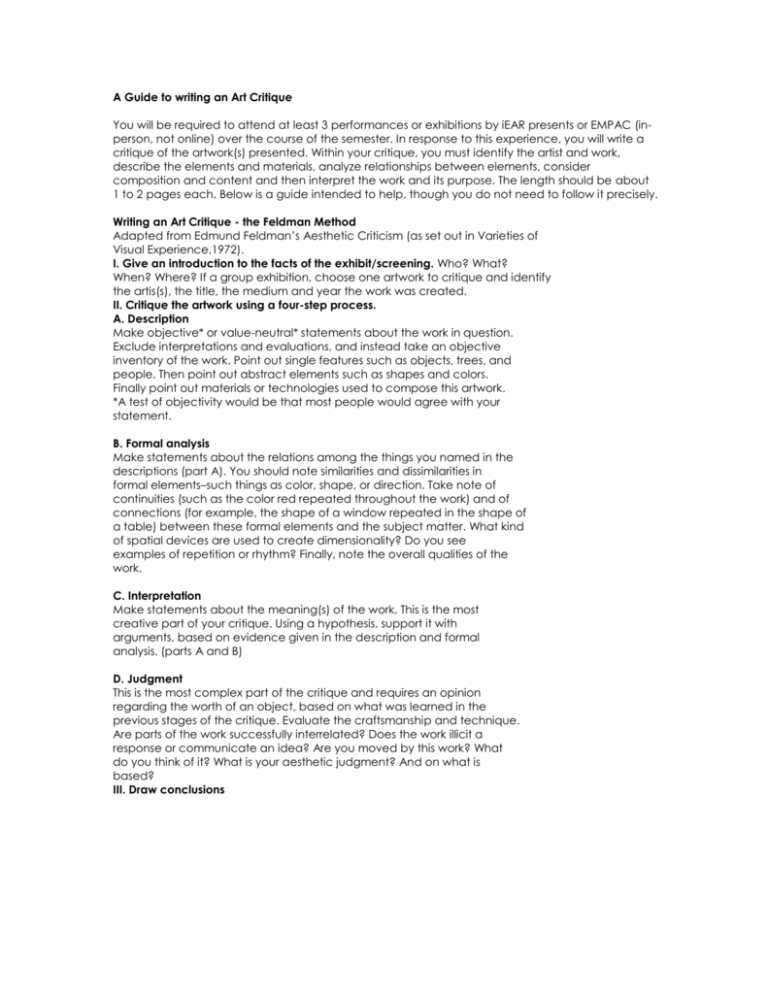
A Guide to writing an Art Critique You will be required to attend at least 3 performances or exhibitions by iEAR presents or EMPAC (inperson, not online) over the course of the semester. In response to this experience, you will write a critique of the artwork(s) presented. Within your critique, you must identify the artist and work, describe the elements and materials, analyze relationships between elements, consider composition and content and then interpret the work and its purpose. The length should be about 1 to 2 pages each. Below is a guide intended to help, though you do not need to follow it precisely. Writing an Art Critique - the Feldman Method Adapted from Edmund Feldman’s Aesthetic Criticism (as set out in Varieties of Visual Experience,1972). I. Give an introduction to the facts of the exhibit/screening. Who? What? When? Where? If a group exhibition, choose one artwork to critique and identify the artis(s), the title, the medium and year the work was created. II. Critique the artwork using a four-step process. A. Description Make objective* or value-neutral* statements about the work in question. Exclude interpretations and evaluations, and instead take an objective inventory of the work. Point out single features such as objects, trees, and people. Then point out abstract elements such as shapes and colors. Finally point out materials or technologies used to compose this artwork. *A test of objectivity would be that most people would agree with your statement. B. Formal analysis Make statements about the relations among the things you named in the descriptions (part A). You should note similarities and dissimilarities in formal elements–such things as color, shape, or direction. Take note of continuities (such as the color red repeated throughout the work) and of connections (for example, the shape of a window repeated in the shape of a table) between these formal elements and the subject matter. What kind of spatial devices are used to create dimensionality? Do you see examples of repetition or rhythm? Finally, note the overall qualities of the work. C. Interpretation Make statements about the meaning(s) of the work. This is the most creative part of your critique. Using a hypothesis, support it with arguments, based on evidence given in the description and formal analysis. (parts A and B) D. Judgment This is the most complex part of the critique and requires an opinion regarding the worth of an object, based on what was learned in the previous stages of the critique. Evaluate the craftsmanship and technique. Are parts of the work successfully interrelated? Does the work illicit a response or communicate an idea? Are you moved by this work? What do you think of it? What is your aesthetic judgment? And on what is based? III. Draw conclusions


